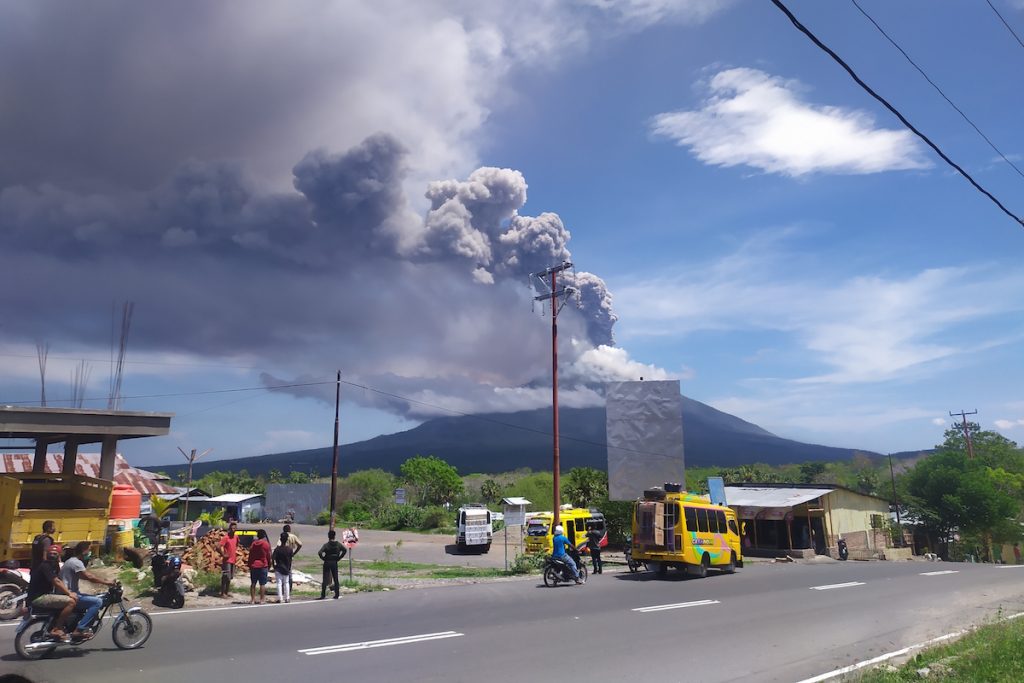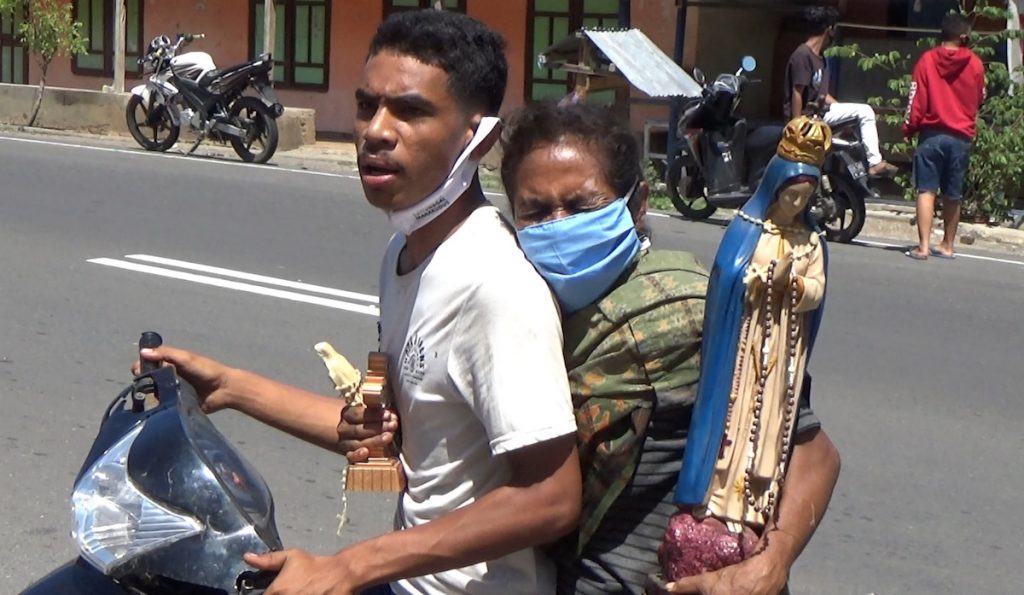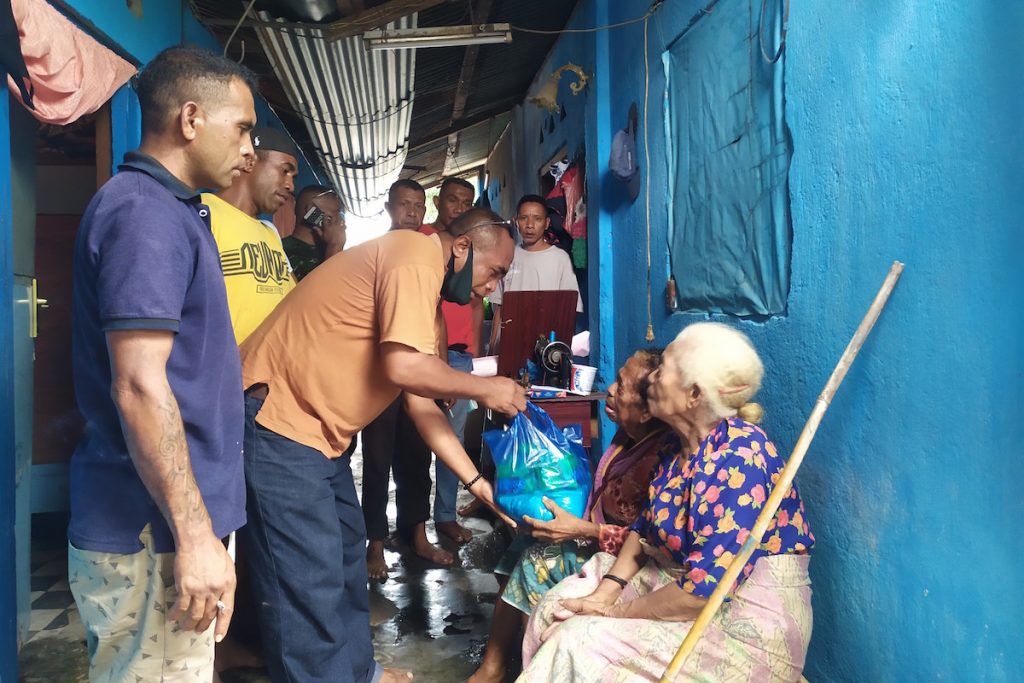
Ursula Deran was with other Catholics attending Mass at St. Wilhelmus Kimakama Catholic Church in Watodiri village when she first heard the volcano erupt.
Initially she thought it was thunder but then she and others saw thick smoke coming out of the crater of nearby Ile Lewotolok Volcano on Lembata Island.
“We became panicked and we all rushed out of the church,” said Ursula while hugging the statue of the Virgin Mary on the day of the eruption, Nov. 29, while looking for her children.
“We only hope for the help of Our Lady, please save us and our children,” she said.
Watodiri and several other villages are located right on the volcano’s slopes.
There had been other eruptions beginning Nov. 27, until the larger one that occurred during Sunday morning Mass which threw volcanic ash and small rocks onto village areas. Another eruption occurred in the mid-afternoon.
Volcanic ash ended up spreading across five districts of Indonesia’s East Nusa Tenggara province.

Villagers living in the volcano’s vicinity were evacuated but in the process many of the evacuation teams had difficulty penetrating thick volcanic clouds.
“The sulfur fog was very thick. I had a hard time getting through even with glasses. I saw a mother and her child on the edge of a village,” said Alvian Raya Belen, a volunteer with reddened eyes due to irritation.
“They tried protecting themselves using plastic containers. It was very heartbreaking,” he said.
The Lembata Regency Government said around 21,000 residents fled to Lewoleba, the main city on Lembata Island. About 8,000 others took refuge in 20 shelter posts provided by the local authorities.
Several children were declared missing but were eventually found.
An unknown number of villagers chose to remain at their homes to care for livestock and their properties. Some elderly and people with disabilities also remained in their homes.

Since the eruption various forms of assistance and aid has been sent to the displaced by both the state and volunteer communities.
Lembata regent, Eliyaser Yentji Sunur, said the first priority in helping displaced people was supplying milk to young children and the elderly.
Various groups including the Catholic Church helped the government with aid efforts.
Father Kristo Soge Pr, coordinator of the Lembata Dekenat Relief Post, said that the local church groups helped deliver government aid to those in need.
“Indeed, many of our people expect help,” Father Kristo said, adding that enthusiasm among local Catholics to assist was high, especially among parishioners in Dekenat Lembata.
As of Dec. 7, the volcano was still erupting and those displaced have not been allowed to return to their villages.
Ile Lewotolok Volcano first erupted in 1666, then in the 1800s and 1920s. The largest eruptions occurred in 1966 and 1985 which devastated Lembata Island and the surrounding islands.
Source: Licas Philippines
0 Comments